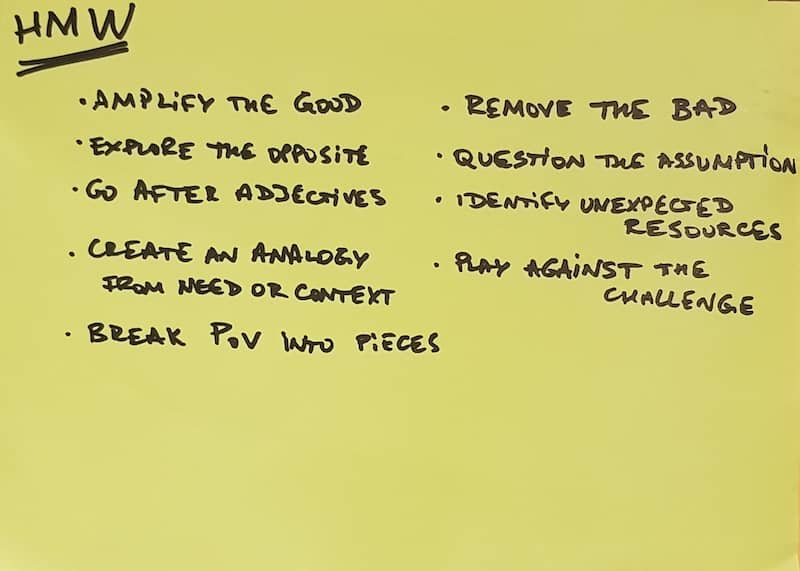How Might We _____ ?
Turning insights into questions that spur creative solutioning
What is it?
HMW, short for “How Might We …?”, is an analytical technique relying on actionable questions asked from a particular point of view on a specific problem. They can be used to spur creative problem solving and produce insights, which lead to significant innovation. It can be used for Brainstorming, but is not necessarily a brainstorming approach. HMW is frequently used as part of Design Thinking sessions.
You need a challenge, a Point of View and a set of relevant questions starting with “How Might We …?”
- The challenge/problem statement is critical for good results and may take time to formulate. It should not imply a solution or be too broad (boiling the ocean)
- The point of view allow for use of empathy for the key actors.
- Multiple HMW questions could be asked in order to dive deeper in the challenge and unveil different perspectives. The following are different perspectives, which can be used to look at the challenge through HMW questions:
- Amplify the good
- Remove the bad
- Explore the opposite
- Question an assumption
- Go after adjectives
- Identify unexpected resources
- Create an analogy from need or context
- Play against the challenge
- Change a status quo
- Break PoV into pieces

Why use it?
HMW allows for creative problem-solving and going out of the established path of thinking. Especially when a lot of time has been spent on a particular direction and the team has developed “group think” or feels stuck.
It helps in breaking frames and molds and lead to innovative solutions.
It can easily “plug” and enhance many other practices, especially when you seek innovation.
Why & How to combine it with other practices?
- HMW can be combined with Impact Mapping as a way to search for deliverables that can influence a particular behaviour change of actor/s
- During Event Storming the team can often spot improvements or ideas for introducing a new way of handling the process, experiments to be carried out. A post-it with a draft HMW question can provide a nice bridge into a HMW and Design of Experiments exercise.
- A list of key questions are formed during facilitation of Start at the End. HMW is a great approach to building key questions from assumptions that could lead to failure.
Related Practices
- Impact Mapping
- Design of Experiments
- Event Storming
- Lean Canvas
- Value Proposition Canvas
Origin
Made popular by Procter & Gamble in the 1970s, but its origin may be tracked as far back as Greek philosophers.
Further information
HBR: The Secret Phrase Top Innovators Use
Stanford d.School: Intro and Guidance For Use
IDEO Design Kit: HMW
Open Innovation Toolkit: HMW
Google Design Sprint Toolkit: HMW
AJ&Smart’s video on HMW: HMW
